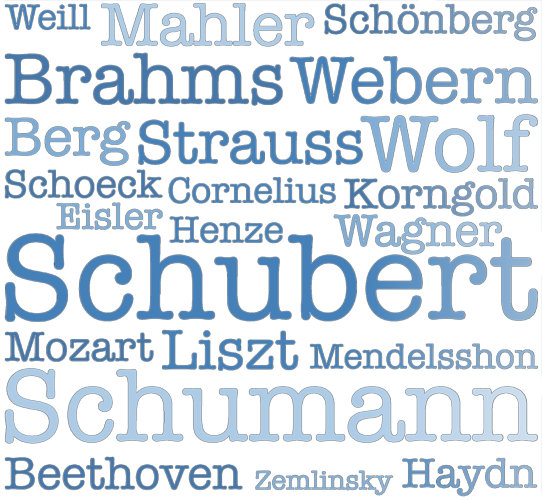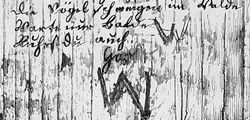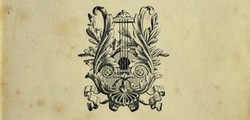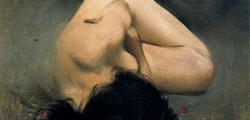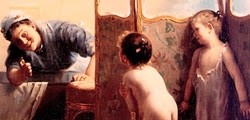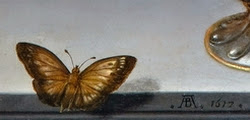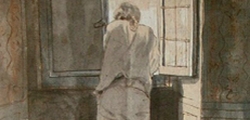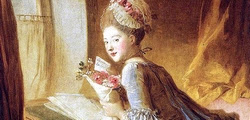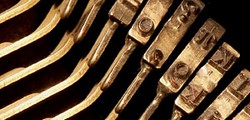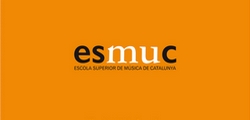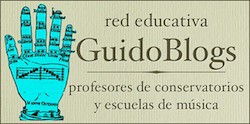Second week of the series in collaboration with the Master's Degree of Lied-ESMUC.Gonzalo Manglano presents Halt!, from Die schöne Müllerin. Thank you very much, Gonzalo!
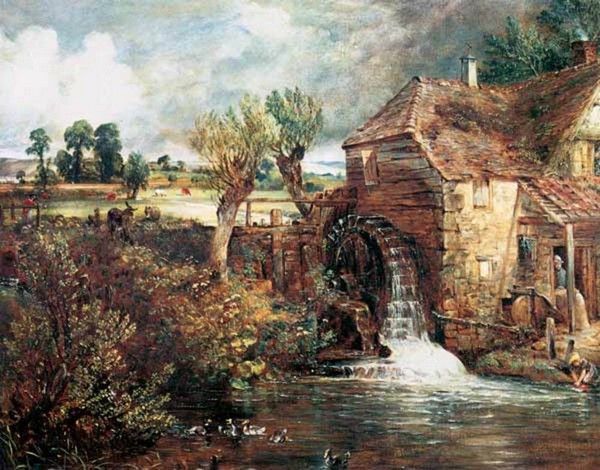
The third Lied of the cycle Die schöne müllerin (“Halt!” - “Stop!”) is the entry point to the plot that the poet Wilhelm Müller puts forward, and that Franz Schubert illustrates with great mastery. The young miller, wanderer protagonist of the cycle introduced in the first Lied (“Das Wandern” - “Wandering”), arrives at a little stream in the second piece (“Wohin?” - “Where to?”) that will join him forever and that will be the co-protagonist of the cycle. This stream will take him to a mill where he enters to work to keep learning the craft and where he will meet the beautiful miller girl.
The third Lied is an important moment of the plot: the discovery of the mill thanks to the stream. Both Müller and Schubert give this piece a special treatment; from the poetical point of view through the symbols and from the musical one thanks to the use of motifs and a bright and energetic writing, unique along the whole cycle.
The first and second Lieder are the key to understand this incredible piece. Schubert introduces with mastery the two protagonists (the stream and the miller) and exposes all the musical resources and motifs that develop along the cycle and that evolve alongside the emotions of the miller. The mill that now appears (and where he will doubt to enter in as he will present in the fourth Lied “Danksagung an den Bach” - “Gratitude to the stream”) is the main stage, where he is going to meet the miller girl, source of the emotional trip of love and disaffection through which Die schöne Müllerin takes us.
The poetical symbology is essential to understand the emotional evolution of the characters and discover relations between songs along the cycle. The water (Das Wasser), personified in the stream, is a symbol of great importance in all the German literature. It has a special relation with the moon (that will take importance in the tenth Lied) and both are symbols of life, death and resurrection. Likewise, is one of the most used symbols along the cycle. It represents the passing of time and acts as the consciousness and destiny of the miller.
The mill (Das Mühle) is another top symbol in the poetry of this age. According to Lurker, the grinding of the mill has an erotic meaning, in the Middle Age legends is used as the perfect love affairs stage. For several Indo-European civilizations it became a symbol of returning and destiny because the wheel is in constant movement. For all this, it’s easy to understand why the amorous object of this story is a miller girl. Moreover, beside the water, the mill accentuates the thought about the passing of time, that it is also shown through the wheels (Die Räder). These represent the movement and the vital process. The constant spinning and the ups and downs make the wheels a symbol of the transient and the fortune. Furthermore, it is a symbol that appears many times along the cycle (we can find it in the Lieder 1, 5, 11 and 14).
In The fair miller-maid the emergence of natural elements is constant and, after searching for the meaning of each of the symbols according to the conventions of the age, we noticed that it is a basic feature in the definition of the evolution of the protagonists’ feelings. Another symbol of great importance that appears in this Lied are the alders (Die Erlen). These are trees that grow beside the water. The color of their wood is light, but it turns reddish once it is cut. Therefore, in several European countries it was considered a bewitched tree. It is a symbol of resurrection, maybe because the transformation from white to red of its wood when it is cut and its semblance to human blood. It is directly related with the famous Lied Erlkönig (The king of the alders), from Goethe, where we find this as a symbol of the magical and supernatural.
Schubert writes in this Lied a vocal melody that is energetic and brilliant that can represent, at the beginning, these alders. The voice ascends fast and descends slowly like the branches over the river. This melody is accompanied by a piano, also with great character, that illustrates the movement of the water and the turn of the mill through motifs in the low range of the piano. In general, the high tempo, the ternary time, the rhythm and the melody transfer a sensation of excitement when meeting the mill. Aus den Erlen heraus (Emerging out from the alders): the mill appears as it was one more character, magical and mysterious.
The alders appear again in the tenth Lied, “Tränenregen” (“Tears rain”). We can understand that the alder is announcing a fatal outcome, the “death” of the miller. Maybe during its first apparition in the third Lied it already anticipates that in the mill he will find the reason of his disgrace, his love for the miller girl.
Other important symbols that appear in this song are the sun (Die Sonne), symbol of the spring light and the thrill (it appears again in the Lieder 8 and 11); and the sky (Die Himmel), origin of the rain that brings fertility and life (also in the Lieder 10, 19 and 20). In this Lied, the sky is related to the sun as symbol of vitality. However, at the end of the cycle it will symbolize the hope beyond, on a brand-new day.
As we can see, thanks to all these symbols, we can find connections between the different parts of the plot and better understand which the emotional evolution of the protagonist is. A journey through an unrequited love experience: from the thrill and the excitement to the denial, the hate, the impotence and, finally, thanks to the stream, the acceptance.
To exemplify this article, I propose the recording of the pianist András Schiff and the tenor Peter Schreier from 1991. Two great performers that get to express masterly the meaning of the text through the music from Schubert. I hope you enjoy it as much as I did while I was writing these lines.
Eine Mühle seh ich blinken
aus den Erlen heraus,
durch Rauschen und Singen
bricht Rädergebraus.
Ei willkommen, ei willkommen,
süßer Mühlengesang!
Und das Haus, wie so traulich!
Und die Fenster, wie blank!
Und die Sonne, wie helle
vom Himmel sie scheint!
Ei, Bächlein, liebes Bächlein,
war es also gemeint?
I see a mill glinting,
from among the alders,
the rushing and singing
pierced by the roar of wheels.
Ah welcome, welcome
sweet song of the mill!
And the house, how cozy!
And the windows, how bright!
And the sun, how brightly
It shines from the sky!
Oh stream, dear stream,
was this what you meant?
(traducción de Samantha López)

